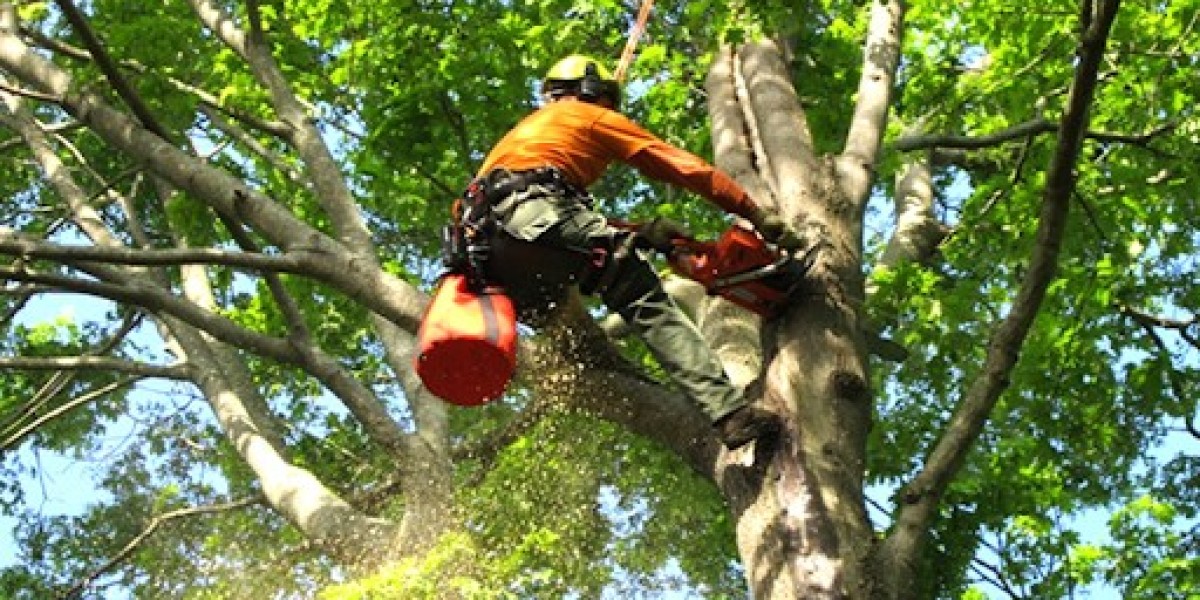Maintaining the health and beauty of trees in your landscape is crucial for both aesthetic and environmental reasons. Trees not only enhance the curb appeal of your property, but they also contribute to the overall ecosystem by providing shade, improving air quality, and supporting wildlife. However, tree maintenance is not just about trimming and watering. It involves a comprehensive approach that ensures the longevity and vitality of your trees.
If you are looking for expert guidance on how to properly care for your trees, advanced tree service professionals can offer valuable tips and insights. In this article, we will explore essential tree maintenance tips provided by experts in the field of advanced tree service, helping you to keep your trees healthy and thriving year-round.
1. Regular Tree Inspections
One of the most important aspects of tree maintenance is regular inspections. Expert tree service providers recommend having your trees assessed at least once a year. An inspection helps to identify potential problems early on, such as diseases, pests, or structural weaknesses that could cause damage to your property or the trees themselves.
An expert tree service provider will carefully examine the trees' trunks, branches, and root systems for signs of decay, disease, or insect infestations. This proactive approach helps prevent small issues from becoming bigger and more costly problems down the line. Regular inspections also ensure that your trees are growing in a healthy environment, with the right conditions for proper root development, sunlight, and water access.
2. Proper Pruning and Trimming
Pruning and trimming are essential for maintaining the health and appearance of trees. Expert tree service professionals emphasize the importance of pruning to remove dead or diseased branches, improve airflow, and encourage healthy growth. However, it’s important to prune at the right time and in the right way to avoid harming the tree.
The best time for pruning most trees is during the dormant season, typically in late fall or early spring. During this time, the tree is less likely to be stressed, and the risk of pest infestation is reduced. When trimming, always cut back dead or damaged branches to prevent disease spread. It is also important to remove branches that are growing too close to the trunk or crowding other branches, as this can inhibit airflow and sunlight penetration.
When it comes to trimming, never remove more than 25% of a tree’s canopy in a single session. Over-pruning can weaken the tree, making it more vulnerable to disease and pests. Advanced tree service experts also advise against "topping" trees, which is the practice of cutting off large portions of the tree’s canopy, as this can cause long-term damage and lead to poor growth.
3. Mulching for Tree Health
Mulching is a simple yet highly effective way to promote the health of your trees. Expert tree services often recommend applying a layer of organic mulch around the base of your trees to improve soil moisture retention, regulate soil temperature, and suppress weeds.
When mulching, be sure to use natural materials such as wood chips, bark, or compost. Avoid using materials like rubber mulch or stones, which can prevent proper water and air circulation around the roots. Apply the mulch in a 3- to 4-inch layer, but be cautious not to pile it against the trunk of the tree. Mulch should be spread evenly and kept several inches away from the base of the tree to prevent rot.
Mulching helps to retain moisture in the soil, reducing the need for frequent watering, especially during hot summer months. It also helps to create a more stable environment for the tree’s roots to grow and thrive.
4. Watering Properly
Watering is a critical component of tree maintenance, but it’s important to do it correctly. Over-watering or under-watering can both have negative consequences on tree health. Advanced tree service professionals recommend deep watering, especially for mature trees, as it encourages deep root growth.
The best way to water your trees is to use a slow, deep watering method that allows the water to penetrate deep into the soil. This is best achieved by using a soaker hose or a drip irrigation system, which ensures that the water is evenly distributed around the tree’s root zone. Avoid sprinklers that only wet the surface of the soil, as they encourage shallow root growth and don’t provide enough moisture for deep-rooted trees.
As a general rule, trees should be watered deeply once a week, especially during dry spells. Young trees, however, may need more frequent watering to establish their root systems. Keep in mind that newly planted trees may require extra attention, as their roots are still developing and need consistent moisture to grow.
5. Fertilization and Soil Health
Fertilization plays an important role in tree maintenance, especially when the tree shows signs of nutrient deficiencies. Advanced tree service experts recommend that fertilization should be done based on soil tests, as it allows you to target specific nutrients that the tree may need. Over-fertilizing can lead to excessive growth and weak trees, so it is crucial to apply the right amount of fertilizer.
In addition to fertilization, it is essential to keep the soil healthy. Trees require well-drained soil that is rich in organic matter to thrive. Soil compaction, poor drainage, and lack of essential nutrients can limit a tree’s ability to grow and may even cause it to become stressed or diseased.
To improve soil health, consider aerating the soil around your trees regularly. Soil aeration involves creating small holes in the soil to allow air, water, and nutrients to reach the root zone more easily. This is especially important for trees growing in compacted or clay-heavy soil, which can hinder root development and water absorption.
6. Tree Support and Staking
Young or newly planted trees often require extra support to help them grow straight and strong. Advanced tree service experts recommend staking or guying young trees to prevent them from leaning or being blown over by strong winds. However, it’s important to remove the support once the tree becomes established to prevent it from becoming dependent on the staking.
When staking, use soft, flexible materials that will not damage the tree’s bark or interfere with its natural growth. Make sure the stakes are not placed too tightly, as the tree should be able to sway slightly in the wind to encourage stronger trunk development. Staking should be temporary, lasting only until the tree has established a strong root system and is able to stand on its own.
7. Managing Pests and Diseases
Trees, like any other plants, are vulnerable to pests and diseases that can cause significant damage. Expert tree service providers are trained to identify early signs of pest infestations and disease. Regular inspections can help catch these issues early, before they become a threat to the tree’s health.
Common tree pests include aphids, beetles, caterpillars, and borers, while diseases such as fungal infections, root rot, and blight can weaken the tree and eventually lead to its decline. If you notice unusual signs such as discolored or wilting leaves, holes in the trunk, or a decrease in overall growth, it’s important to consult with an expert tree service professional.
Advanced tree service experts use environmentally friendly treatment methods, including organic pesticides and fungicides, to manage pests and diseases. In some cases, they may also recommend removing infected branches or limbs to prevent the spread of disease to the rest of the tree.
Conclusion
Proper tree maintenance is essential for keeping your trees healthy, safe, and aesthetically pleasing. With expert tips from advanced tree service professionals, you can ensure that your trees are properly cared for throughout the year. Regular inspections, proper pruning, mulching, and watering are just a few of the key practices that contribute to tree health. By taking proactive steps to care for your trees, you can enjoy the many benefits they provide for years to come.
If you're unsure about how to implement these tips or need professional help with your tree care needs, don't hesitate to contact an advanced tree service company. Their expertise and experience will help you maintain beautiful, healthy trees that enhance the beauty of your property while ensuring the safety and longevity of your landscape.








